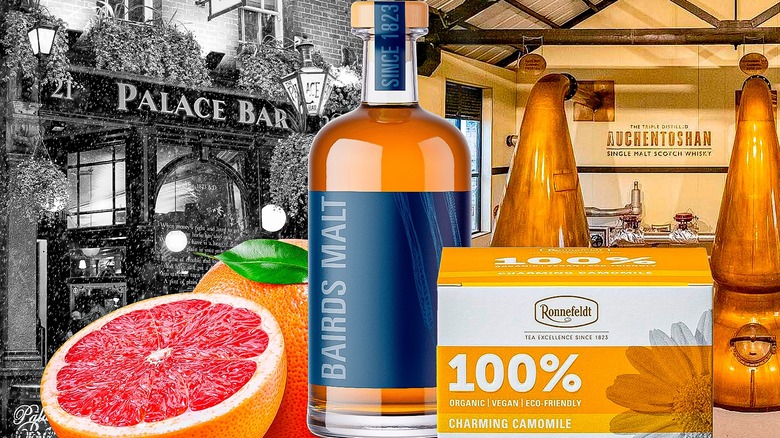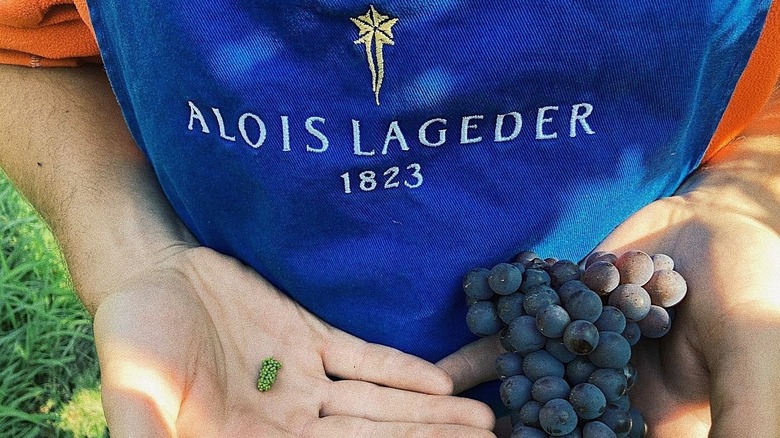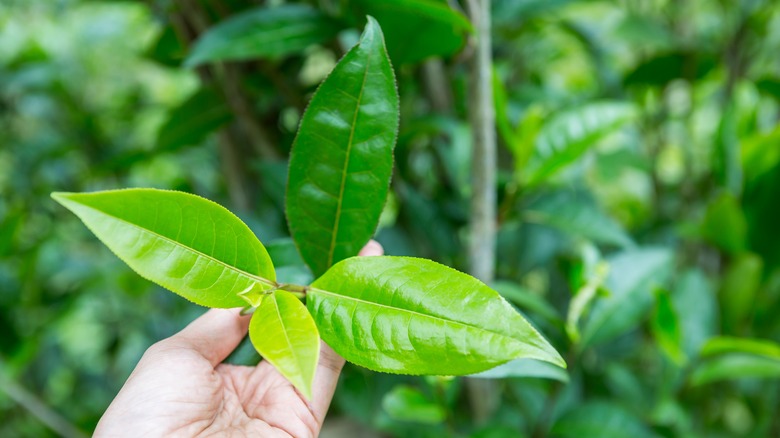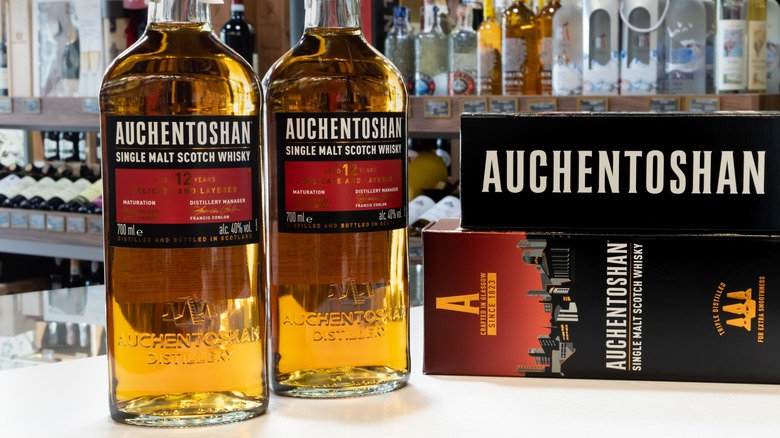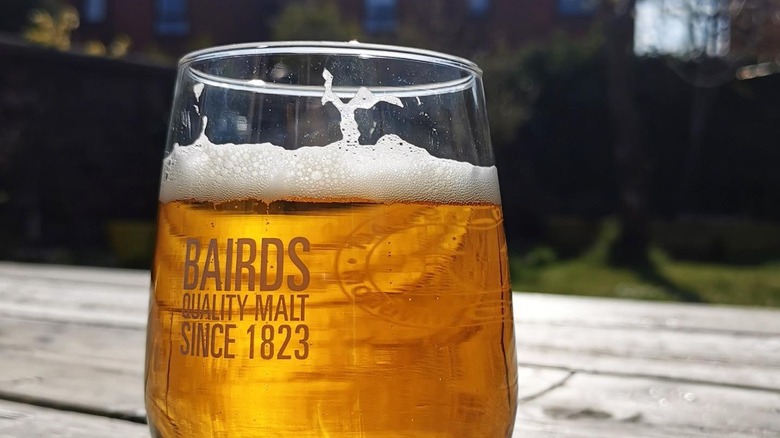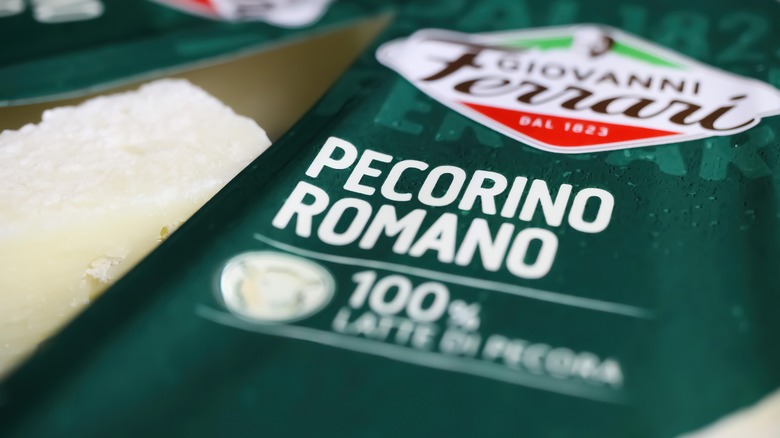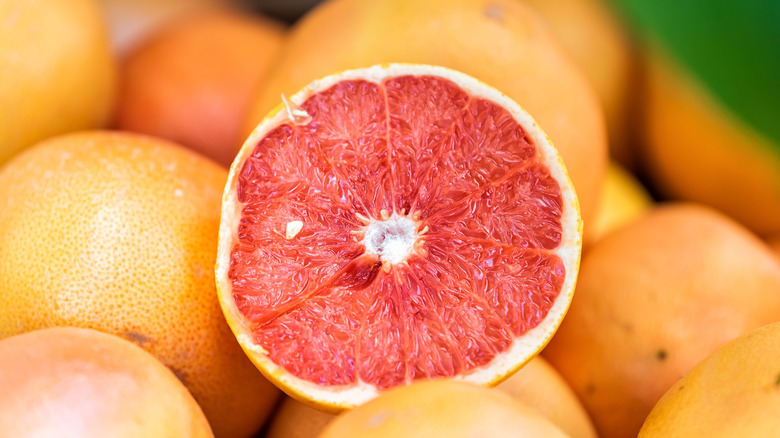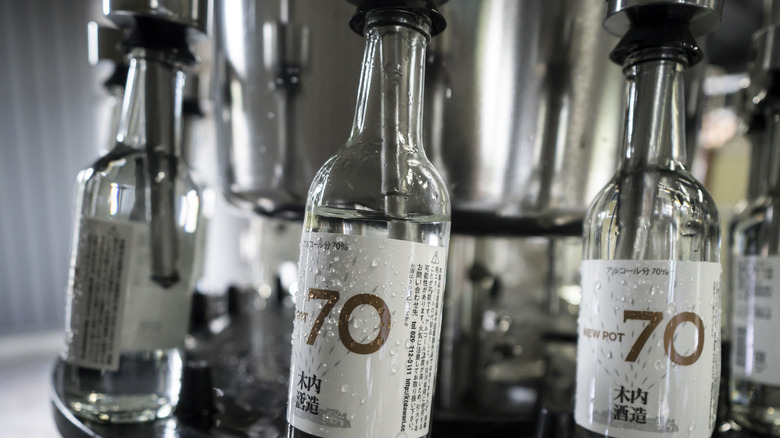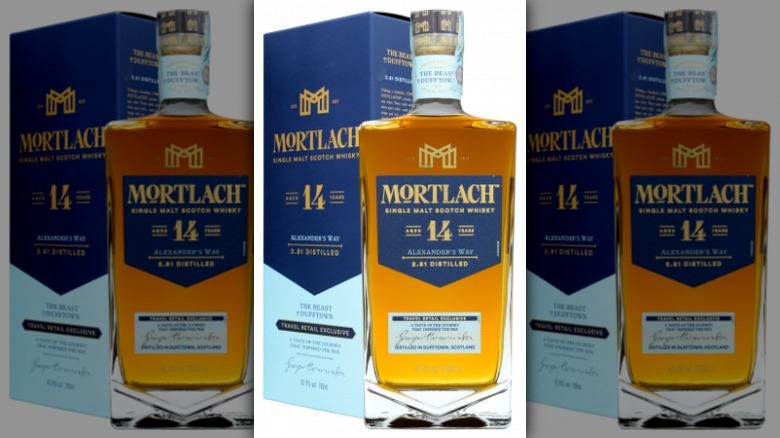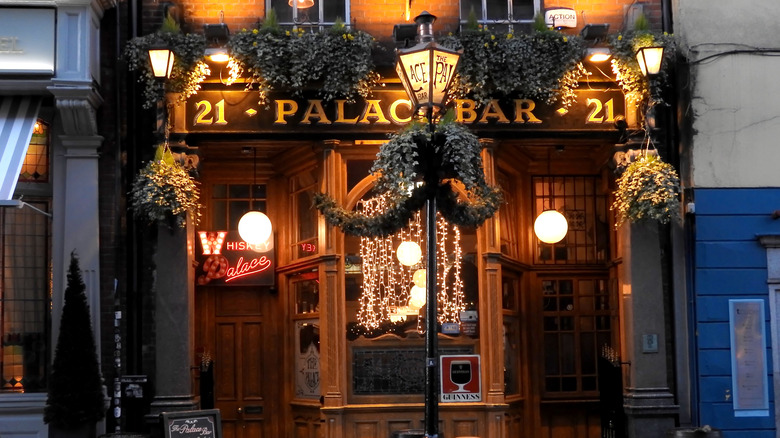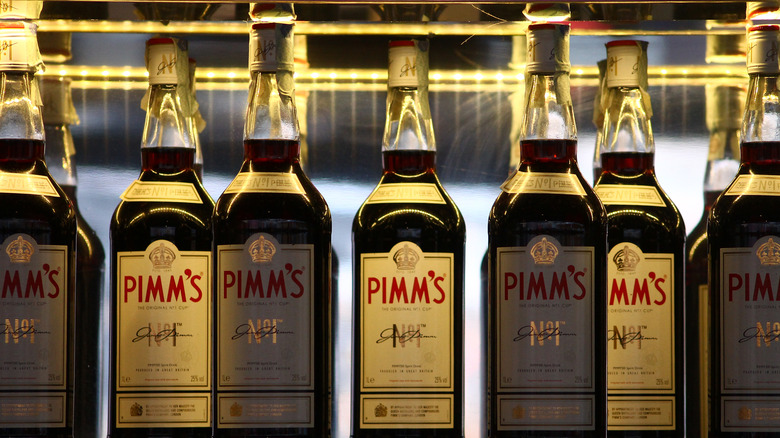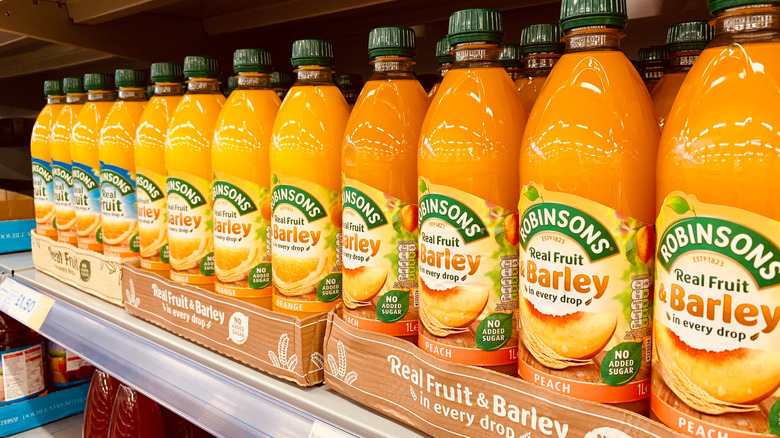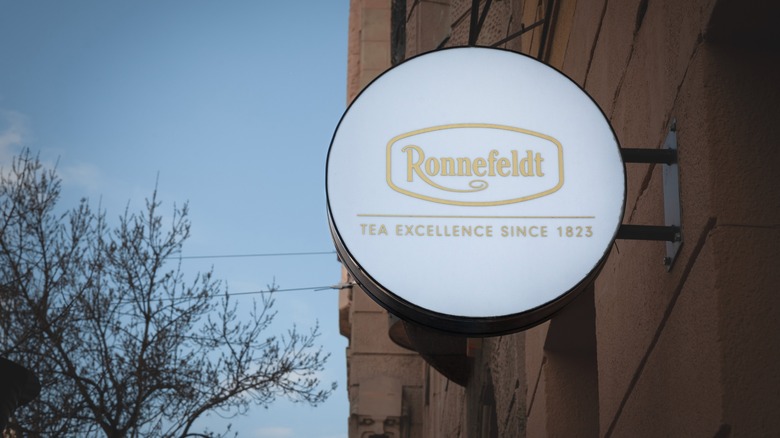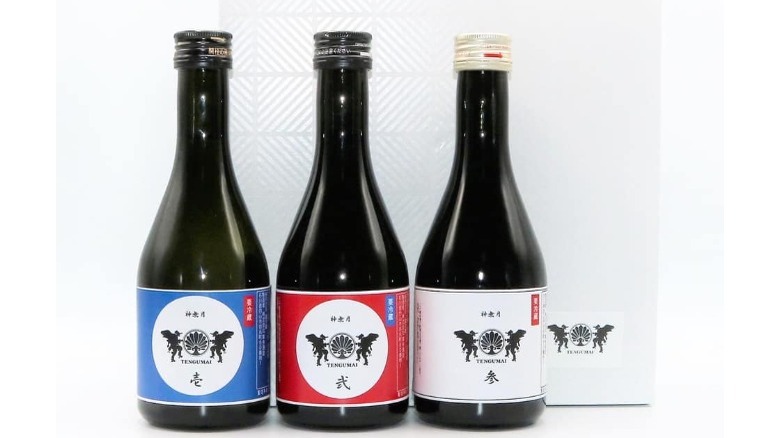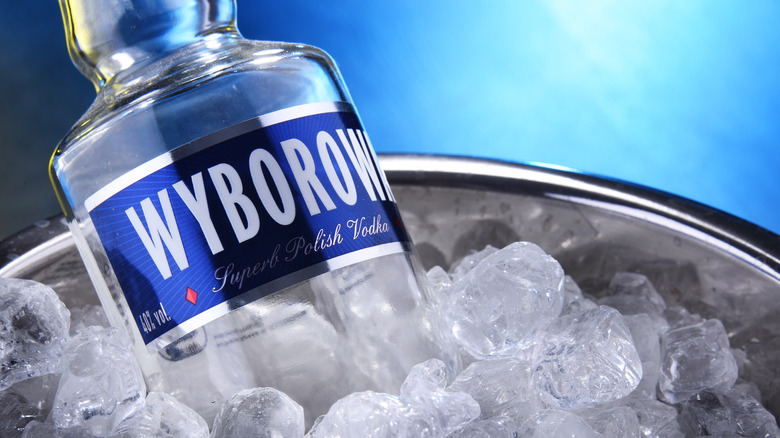14 Foods, Drinks, And Restaurants Turning 200 In 2023
The Daily Meal has already saluted foods and drinks that are celebrating their 100th birthday in 2023, restaurants that opened for business in 1923, and even those rare ones that opened 150 years ago and are still going strong today. Let's go even further back in time and give thanks to those in the food and drink world that have endured for 200 years, continuing to fill bellies and raise a smile.
In the history books, 1823 doesn't exactly leap off of its own page: Pope Leo XII was elected to lead the Roman Catholic Church, Simón Bolívar became the President of Peru, the Monroe Doctrine was introduced, and the sport of rugby may (or may not) have got off and running in that year. You'd have to stretch to even find a famous birthday that year, unless one is a big fan of naturalist Alfred Russel Wallace or perhaps Abdülmecid I, Sultan of the Ottoman Empire.
Instead, let's remember 1823 for the humble beginnings of some beloved food and drink discoveries, brands, companies, and even an Irish bar that made it to see its bicentennial of existence. These include indulgent favorites of Queen Elizabeth II, whisky products distilled in the northern part of her kingdom, sake makers in Japan, an exquisite Polish vodka, and the first seedlings of grapefruit to be planted in the United States. So let's raise a glass, perhaps a Pimm's Cup or a spot of tea, and say cheers to 14 foods, drinks, and restaurants turning 200 in 2023.
1. Alois Lageder (Italy)
Johann Lageder popped the cork on a long-running family business in 1823 by becoming a wine merchant in mountainous northern stretches of Italy, where the country meets Germany, Austria, and Switzerland. In 1934, Johann's great-grandson Alois changed the company's direction when he acquired a wine estate, and then other vineyards in the Alto Adige area. Instead of selling other's wines, they started producing and selling their own.
Alois Lageder winery now outputs over a million bottles of wine annually, which have been singled out by Wine Spectator, The Los Angeles Times, and has long held a place on Opening A Bottle's Essential Winemakers of Italy list. Now run by Alois Lageder IV, in the 21st century, the winery has been both experimental with their Comet line, as well as moving towards a more sustainable form of grape growing. By 2024, every vineyard involved in its production will be either fully organic or biodynamic. Lageder IV told Opening A Bottle, "My hope is that in 15 years time, we can stop talking about biodynamics and just talk about healthy agriculture."
2. Assam Tea (India)
In the early part of the 19th century, as the demand for tea for the British rose, the Empire began to seek new avenues outside of trading partner China. While Indians have long enjoyed the taste and medicinal use of drinking tea, the rest of the world started playing catch up with the country's rich leaves starting in 1823. That's when Scottish explorer and merchant Robert Bruce came to India's Assam region and was introduced to a tea plant, later be classified as Camellia sinensis var. assamica by Singpho tribe chief Bisa Gam. This discovery would launch an industry, and eventually solidify India's place in the tea world.
Bruce died a year later and sadly didn't live to see the fruits of his discovery. His brother, Charles Alexander Bruce, picked up the mantle. By the end of the 1830s, the Assam Tea Company was established, and the new black tea sensation began to be auctioned off in London. Flash forward 200 years, and the birthplace of Assam tea kicked off 2023 with a slew of ways to honor the drink's bicentennial anniversary, including several publications on its rich history, launching a tea academy, and even cutting a cake to celebrate.
3. Auchentoshan Distillery (Scotland)
Up the River Clyde from Glasgow, on the site of a former monastery, John Bulloch established the Duntocher Distillery in 1817. Six years later, an engineer with the mysterious name of Mr. Thorne legally licensed the name Auchentoshan (pronounced "Au-ken-toh-shen," but perhaps best said from the lips of actor Brian Cox on Esquire's YouTube channel). John Hart and Alexander Filshie took over Duntocher in 1834 and renamed it the Auchentoshan Distillery.
Auchentoshan whisky has warmed the spirits of onlookers at the launches of the ships HMS Queen Mary and HMS Queen Elizabeth, and while badly damaged during German bombing raids in World War II, the distillery has soldiered on. Now under the umbrella of Beam Suntory, the company describes itself to The Spirits Business as such, "Auchentoshan is the urban city single malt whisky, unlike typical single malts. With our three copper stills, located right in the heart of Glasgow, we always pay homage to the city and bring to life the urban cityscape that is our home that we want to take to the world."
4. Bairds Malt (Scotland)
In 1823, Scottish maltsters brothers Frank and Hugh Baird opened the Great Canal Brewery, dedicated to providing quality brews to their fellow Glaswegians. Within a decade, their fine malting skills warranted further growth of their company, as they started to work with other brewers to fulfill their supply needs, including the first roasted malts to be made in all of Scotland.
To this day, Bairds Malt continues to be a major malt supplier to distilleries and breweries, offering over 30 various malt products sourced from quality barley, including base malt, distilling malt, highly kilned malt, roasted malt, and its heritage collection. It is now a part of United Malt Group, one of the world's largest suppliers, helping to produce some of the finest whiskeys.
In its 200th year of operation, Bairds Malt is celebrating its past and looking toward the future. In a Facebook post, it noted, "Just like the Whisky that much of our malt goes to produce, it's the efforts and investment of yesterday that lay the foundations for those next chapters still to come."
5. Ferrari Formaggi (Italy)
In northern Italy, in the dairy-fertile Po Valley region, Ferrari Formaggi traces its origin to a small factory born in 1823. The dairy produced butter, mascarpone, and hard cheese called "grana." The Ferrari name entered the picture when then-owner Peppino Rossi's nephew, Silvio Ferrari, helped to push their business' reach south throughout Italy.
Ferrari Formaggi changed with the times and modernized in the 1960s thanks to visionary owner Giovanni Ferrari. Ferrari drove sales thanks to his innovative idea of pre-packaged cheeses like Parmigiano Reggiano and Pecorino Romano (becoming the first in Italy to do so), and introducing the popular GranMix line in the 1980s. Giovanni's daughter, Laura Ferrari, who is the company's current president, told L'Economia that her father believed in his product so much that he banned cheese graters from their kitchens.
Ferrari Formaggi, which proudly displays its establishment year in its logo, has also made a point to celebrate 200 years of "il sapore della creatività" ("the taste of creativity"), including the release of an art book entitled, "Ferrari Giovanni Industria Casearia — 200 anni." On Ferrari's Instagram, it noted, "We have always believed in innovation and differentiation of our products, never neglecting sustainability. Join us as we celebrate this historic milestone and savor the true essence of quality cheese."
6. Grapefruit introduced in the United States
The grapefruit is an offshoot of the pairing of a pummelo and sweet orange, and one of the only citrus hybrids to not originate in Southeast Asia. First discovered in the West Indies by explorers in the 17th century, in either Barbados or Jamaica, it was once known as "the forbidden fruit." There are two theories for its naming: either for the look of its cluster in how it grows or for having the taste of grapes. Most assume the former is the origin.
A French count named Odet Philippe was a man of many firsts: one of the first European settlers in Florida's Pinellas County, the first to introduce cigar making to the Tampa Bay area, as well as the first person to cultivate the grapefruit in America. The latter happened in 1823 on his St. Helena Plantation, which is now known as Philippe Park. All subsequent varieties from the United States descend from Philippe's inaugural planting, including the first grapefruit to receive a U.S. patent — the "Ruby" Red Grapefruit.
Arizona, California, and Texas have joined Florida as major producers of the grapefruit, which for the 2022-2023 crop forecast, was estimated to total 324,000 tons. The grapefruit has inspired a fad diet, lent its name to songs by Tom Waits and Tove Lo and spring training games that are held in Florida, and was even shoved into the face of Homer Simpson by his son Bart.
7. Kiuchi Brewery (Japan)
As a Japanese landowner with a surplus of rice from local farmers, Gihei Kiuchi took it upon himself to open a sake brewery in the Hitachi Province's Konosu Village back in 1823. Generations of his family carried on the same principles and production of Kiuchi Brewery's sake into the 20th century, but after alcohol laws changed in Japan, the brewery opened a new avenue of revenue and fame by getting into the microbrew business starting in 1996.
Under the current guidance of Yoichi Kiuchi, they released Hitachino Nest Beer, which has become popular well beyond the shores of their home island. Kiuchi told NPR, "Making sake is like judo or flower arranging — you're judged by how well you stick to the rules; there's no margin for improvisation. But beer is about doing what you want. It's fun to make and sell. Sake is hard to make and tough to sell."
In the 21st century, Kiuchi Brewery has branched out even further. In 2006, they opened a noodle restaurant, Kura + Soba Nakaya, and a decade later released whisky for the first time. Yoichi's brother Toshiyuki told Whisky Magazine at the launch, "We are looking to create a genuinely new kind of whisky, not a copy of Scottish whisky."
8. Mortlach Distillery (Scotland)
With the passing of the Excise Act in 1823, Scotch whisky production went legit, and in the same year, James Findlater opened the Mortlach Distillery for business on the site of a former illegal one in Scotland's Speyside region. Thirty years later, the Cowie family took over Mortlach, and their 2.81 distillation process using six stills of different shapes became known as "The Way," well before the Mandalorian used such a motto.
Called "The Beast of Dufftown," Mortlach outputs more whisky than any other distillery in all of Scotland, with the ability to produce 2.9 million liters per year. Current owners Diaego have been in possession of Mortlach since 1923 and continue to maintain "The Way" to this day in the Malt Whisky Capital of the World, which is also home to Glenfiddich.
In 2015, in partnership with bottler Gordon and MacPhail's, Mortlach 75 Year Old was released, making it not only one of the oldest whiskeys on the market but a pricey one at that, with bottles now fetching upwards of $45,000. Recently, they curated the Six Stills Series, a part of Mortlach by Design, where designers Luca Nichetto, Sabine Marcelis, Joe Doucet, Chrissa Amuah, Felicia Ferrone, and Sebastian ErraZuriz created their own spin on the brand through items like a decanter, a chair, and even an augmented reality experience.
9. The Palace Bar (Ireland)
While the oldest pub in Dublin, Ireland dates back to 1198, the quaint and unpretentious The Palace Bar has been making plenty of noise on its own for the last 200 years of its existence. However, one traditional noise at an Irish pub is surprisingly missing here: singing ... although music does occasionally fill the air. As more of a conversational pub, The Palace Bar has attracted a who's who of Irish talkers, from historic figures like Michael Collins to sports fans, painters, poets, writers, and journalists such as Samuel Beckett, Seamus Heaney, Harry Kernoff, and Patrick Kavanagh. Kavanagh wrote in his biography, "When I first came to Dublin in 1939, I thought the Palace the most wonderful temple of art." (via Dublin InQuirer)
Willie Aherne acquired The Palace Bar in 1946, and his family has not only continued to keep its taps flowing but for a long period, even lived above the pub. The upstairs has since been converted to The Whisky Palace, where they proudly serve their own house brand of Irish whisky. The shape of their new limited edition 11-year-old Single Malt was inspired by the famed old lamp that stands outside of The Palace Bar and was once destroyed by a bus in the 1960s.
10. Pimm's (England)
While the exact year of birth for Pimm's liqueur is up for debate, the common belief is that James Pimm owned a London oyster house where he developed a "house cup" digestive drink consisting of gin, herbs, fruits, and other ingredients as early as 1823. Originally served in "No. 1" tankards, Pimm's Cup became a hit with the affluent crowd, and eventually was bottled for retail sale as Pimm's No. 1. The established date on the label today reads 1840, and Pimm's successive owners helped make the drink a must-have thirst quencher during English summers. Further "No."s were added to the line-up, including one based on brandy, rum, vodka, and whiskey.
There have been endless variations of the Pimm's Cup recipe by mixologists ever since, including across the pond at New Orleans' Napoleon House, where the drink became a libation of choice in the 1940s. Queen Elizabeth II was a lover of Pimm's, and had it served at various events and functions including garden parties at Buckingham Palace. Pimm's is currently owned by Diaego, who has stated on its own website the desire to "continue in the footsteps of our innovative founder, James Pimm, and ensure that we offer consumers compelling reasons to drink Pimm's during their catch-ups with friends."
11. Robinsons (England)
Matthias Robinson first brought his patent barley and patent groats to market in 1823, which were advertised as "inestimable preparations for making BARLEY WATER and GRUEL of a very superior quality, in a few minutes, at one half the price of the common articles" (via The Morning Post). The company then became Robinson and Bellville, and in 1862 merged with a mustard company to form Keen, Robinson & Bellville, supplying goods to King William IV and Napoleon III.
Robinson's fortunes changed in the 20th century when Eric Smedley Hodgson, who worked for Robinsons' then parent company Colmans of Norwich, added lemon and water to the barley to create a concoction that would become known as Robinsons Lemon Barley Water. Smedley pedaled the refreshing drink on tennis players and umpires at Wimbledon in 1935, and it went on to become a partner for the event for 86 years.
Robinsons has expanded its offerings to include Fruit Creations, Fruit Cordials, Fruit Shoot, and Benefit Drops. In 1955, it was appointed by Queen Elizabeth II with a royal warrant. The brand was acquired by Britvic in 1995, which has further expanded its reach on shelves across the globe.
12. Ronnefeldt Tea (Germany)
In the early 19th century, Johann Tobias Ronnefeldt honed his skills as an importer and exporter. He struck it out on his own in 1823, setting up a tea trading company under his last name, far from the open sea in Frankfurt, Germany. Ronnefeldt's first trading partner was China, and it would go on to include the importing of teas from the Himalayas, Japan, Africa, and South America. When he died, his wife Friederike Ronnefeldt took over, marking one of the first female CEOs in the history of business.
Ronnefeldt's fine tea can now be found in 80 countries worldwide, at luxury hotels and renowned tea houses. To uphold the character of the brand, it is not sold in grocery stores. In 2019, for the first time ever, they launched a line of ice teas. They even have a "TeaAcademy" to further the knowledge base of hoteliers and restaurateurs. Ronnefeldt continues to be a family-run business, now under seventh-generation owner Jan-Berend Holzapfel. Holzapfel said in a press release, "I look back on the history of our house with a lot of heart and pride. We look forward to celebrating the anniversary together with tea lovers from all over the world and would like to continue to have them with us the finest tea enjoyment." (via Presseportal).
13. Shata Shuzo (Japan)
In the shadow of Japan's Mount Haku, where it meets the Kaga plains, Shata Tauemon took advantage of the natural waters and rice fields to start a sake brewery in 1823. Shata Shuzo's best-known product is Tengumai sake, which derives its name from the magical and mischievous winged folklore figure "Tengu," and that the potent potable would make him dance ("mai").
Tengumai is produced using its traditional "Yamahai Method," with the philosophy of continuing to brew "sake by passing on the joy of crafting sake along with the skills learned from our ancestors [to] the next generation." The company is currently under the watch of Kazunari Shata, marking the eighth generation to run the business. Shata wrote on the company's website, "We are determined to continue to brew sake that can enrich people's hearts and bring harmony." To celebrate 200 years, Shata has updated its employee uniforms, which it hopes will inspire hard work and continue to make happy customers.
14. Wyborowa Vodka (Poland)
While the exact origins of vodka are lost to time, Poland has had a long history with the clear liquor, with Pablo Picasso himself proclaiming the country's signature spirit as one of three astonishing things to come from the 20th century, besides the Blues and Cubism. The Polish city of Poznań was a center for vodka production, and in 1823, Hartwig Kantorowicz set up a distillery that started the journey for a vodka still found on shelves today. According to Newsweek Poland, in that same year, the newspaper Izys Polska held a vodka contest, and Kantorowicz's was deemed the best, noted as "wyborowa," meaning "exquisite."
The name Wyborowa stuck, and their recipe for distilling rye and water officially was branded as such in 1927. Five years later, it became the first Polish vodka to receive an international trademark. Wyborowa survived two world wars and a communist government takeover of the industry, went on to (possibly) serve as a payment for a Polish Rolling Stones concert, climb aboard the first flight of the Concorde, and saw architect Frank Gehry design a bottle for the company. Wyborowa has been under the ownership of Pernod Ricard since 1999, and the award-winning vodka remains a top-10 seller around the world, and an export of pride for the Polish people.
